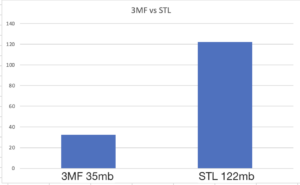“The 3MF file format is more sophisticated in how it compresses geometry reducing the size by roughly 65% and allows one to embed file traceability like the designers' name and copyright information within the export.”
Arthur Azoulai : Slicelab
When computational design consultancy Slicelab need to send a complex, high fidelity component to 3D print they turn to 3MF as their file format of choice.
For the design of their G-Frames, the 3MF file format was essential to communicating geometry, materials and author information, all within a single compressed file.
Register for Webinar

Slicelab is a design consultancy with over a decade of experience using cutting edge computational software and digital fabrication to realize projects for clients around the globe. In between those projects, we like to continuously explore new tools and research different types of product design possibilities.
“To ensure a smooth surface finish look, the meshing exports of each part had to be done at very high resolution, with the smallest possible overlap so that the colors could be applied correctly.
The files themselves became really heavy and difficult to handle due to the high density of the mesh. To alleviate that, we used a ‘homebrew’ meshing system that we utilize for most of our AM projects to simplify our meshes while keeping the intended designed form and maintaining exact dimensional qualities.
From there, the final step was to bring the geometry back into Rhino one last time to apply the final colors and export to a 3MF file. This file type can allow multiple overlapping meshes – with different colors – to print cleanly.
This file format is more sophisticated in how it compresses geometry reducing the size by roughly 65% and allows one to embed file traceability like the designers’ name and copyright information within the export.”
The difference in file size between the compressed 3MF file (35mb) and an STL (122mb) of the same design can be seen here.

Read the full story on the development of G-Blades using computational DfAM and 3MF here along with a webinar with Slicelab to learn how 3MF enables them to export complex designs and check the 3MF compatibility matrix to see if your software workflow for additive manufacturing can benefit from using 3MF.

